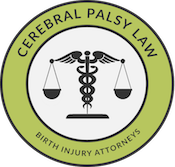Cerebral Palsy Attorneys in Troy, Michigan
Cerebral palsy (CP), a neurological condition characterized by various movement impairments, is caused by damage to an infant’s or child’s developing brain. “Cerebral” refers to the cerebrum, the part of the brain affected by injury, and “palsy” refers to any subsequent movement disorders. People with cerebral palsy typically experience impairments related to coordination, posture, range of motion, balance, movement, and limb control, but other side effects may include epilepsy and seizure disorders, learning disabilities, mental deficiencies, communication disorders, difficulty feeding and swallowing, and deficiencies of the senses (particularly vision and hearing). The four types of cerebral palsy include spastic cerebral palsy, ataxic CP, athetoid/dyskinetic CP, and mixed cerebral palsy, and the condition is generally classified as mild, moderate, or severe.
At Michigan Cerebral Palsy Attorneys, our Troy cerebral palsy lawyers encourage the families and individuals affected by cerebral palsy to reach out for the compensation necessary to afford medical and rehabilitative help. In cases where medical malpractice occurred, reaching out for financial compensation may require the aid of a cerebral palsy attorney. Complete our contact form or call Michigan Cerebral Palsy Attorneys toll-free at (888) 592-1857 and one of the Troy cerebral palsy lawyers from our legal team will help you answer your legal questions.
Cerebral Palsy in Troy, Michigan
Our Troy Cerebral Palsy Lawyers Explain the Causes of Birth-Related Brain Damage
 Troy, Michigan serves as one of Metro Detroit’s most advanced hubs in the health care sector, offering a wide range of medical resources and services to its residents. However, our Troy cerebral palsy lawyers handle medical malpractice birth injury cases from Troy in which medical professionals fail to diagnose, identify, manage, and treat certain pregnancy and delivery conditions and complications that lead to cerebral palsy.
Troy, Michigan serves as one of Metro Detroit’s most advanced hubs in the health care sector, offering a wide range of medical resources and services to its residents. However, our Troy cerebral palsy lawyers handle medical malpractice birth injury cases from Troy in which medical professionals fail to diagnose, identify, manage, and treat certain pregnancy and delivery conditions and complications that lead to cerebral palsy.
In this section, our Troy cerebral palsy lawyers will list a few of the common complications of pregnancy and delivery that, when mismanaged, may lead to birth injury. For a more comprehensive list, visit our webpage on cerebral palsy causes and risk factors here.
- Uncontrolled Infant Illnesses: Few pregnancies progress without encountering a fetal or infant health complication. While most of these complications are harmless when managed and treated, certain ones can be very harmful when left undiagnosed or uncontrolled. As mandated by the standard of care, medical professionals are responsible for diagnosing, managing, preventing, and treating the following infant illnesses:
- Jaundice and Kernicterus: While jaundice (hyperbilirubinemia) is a harmless, common condition in newborn babies, untreated jaundice leads to kernicterus, a condition marked by dangerously high levels of bilirubin in an infant. Since kernicterus is so easy to avoid, kernicterus injuries are essentially all considered medical malpractice injuries.
- Neonatal Sepsis and Meningitis: These dangerous newborn infections post life-threatening risks to infants when left untreated. When patients are not aptly warned or tested for neonatal sepsis and meningitis, it is medical malpractice.
- Fetal Stroke: Fetal strokes occur anytime between 14 gestational weeks and delivery and cause damage that often leads to brain cell death, fatality, cerebral palsy, epilepsy, and cognitive impairment. Some causes of fetal stroke include hypoxic ischemic encephalopathy, brain trauma, preeclampsia, premature rupture of membranes (PROM), chorioamnionitis, and placental abruption, so medical professionals must detect, treat, or control complications of pregnancy and delivery in order to avoid fetal stroke.
- Labor and Delivery Problems: A number of complications may arise during the birthing process that can put the mother and baby in danger. Some of the more common labor and delivery problems include:
- Hypoxic Ischemic Encephalopathy (HIE): HIE, or birth asphyxia, is a form of brain injury that occurs when an infant receives inadequate oxygen supply to the brain around the time of birth. Hypoxic ischemic encephalopathy results in brain damage, developmental delays, cerebral palsy, and related conditions.
- Premature Birth: Preterm births occur before 37 gestational weeks and often lead to cerebral palsy and lifelong disability, HIE, jaundice and kernicterus, infection, and intracranial hemorrhages. A premature baby is roughly thirty times likelier to develop cerebral palsy than a full term baby.
- Premature Rupture of Membranes (PROM): PROM occurs when a mother’s water breaks (the amniotic sac and chorion rupture) more than an hour before labor begins. PROM is often the result of preterm delivery, vaginal infections, previous PROM or vaginal surgeries, and other mismanaged or untreated aspects of pregnancy. PROM often results in cerebral palsy, developmental disabilities, and even death.
- Uterine Rupture (Womb Rupture): When the forces of labor and delivery cause the uterus to tear open, uterine rupture occurs. Risk factors for uterine rupture include VBAC (vaginal birth after Cesarean delivery), the misuse of labor induction drugs, post-term labor, multiple gestations, and abnormal fetal presentation. Uterine rupture may cause HIE, damage to the uterus, and maternal hemorrhaging.
- Nuchal Cord: A nuchal cord is the term given to the complication in which the umbilical cord wraps around the baby’s neck. Nuchal cords disrupt the flow of oxygen, blood, and nutrients from the placenta to the baby, in many cases causing neonatal brain damage from hypoxic ischemic encephalopathy. Medical professionals are responsible for closely monitoring risk factors for nuchal cords, which include long umbilical cord length, macrosomia, multiple gestations, excessive amniotic fluid, malpresentation, and malnutrition.
- Umbilical Cord Prolapse and Compression: A prolapsed umbilical cord precedes the baby into the birth canal, and a compressed umbilical cord occurs when the cord becomes constricted between the baby and the mother’s body. Both cord complications may prevent oxygen flow to the baby and result in HIE and cerebral palsy.
- Labor-Induction Drugs (Pitocin and Cytotec): Pitocin and Cytotec are both used to induce labor in a strained delivery—cases of cephalopelvic disproportion, macrosomia, and strong contractions and hyperstimulation often necessitate labor-inducing drugs. However, when incorrectly used, Pitocin and Cytotec may cause injuries including HIE, fetal distress, neonatal seizures, brain damage, cerebral palsy, fetal head trauma and hemorrhaging, and others.
- Placental Abruption: Placental abruption occurs when the placenta separates from the inner uterine wall. While there is no clear cause for placental abruption, physicians must closely monitor women over 35 or younger than 20, women with past abdomen trauma or placental puncture, patients with chorioamnionitis, smokers, and other related factors. Placental abruption may result in fetal blood loss, HIE, and cerebral palsy.
- Abnormal Size and Malpresentation: Fetuses that differ from the average weight, size, and presentation at birth often confront complications during labor and delivery. Some size and presentation abnormalities include:
- Macrosomia: Macrosomic babies are larger than average for their gestational age. Macrosomia may result in HIE, brachial plexus injuries, uterine rupture, cerebral palsy, and other forms of birth trauma.
- Cephalopelvic Disproportion (CPD): CPD occurs when an infant is too large to pass through his or her mother’s pelvic region. It may result in head trauma, HIE, and cerebral palsy.
- Breech Presentation: Babies in the breech presentation enter the birth canal feet or butt first. Breech births often result in umbilical cord prolapse and compression, nuchal cords, fetal distress, traumatic injury, cerebral palsy, HIE, and other birth injuries.
- Face Presentation: In the face presentation, the baby’s face is the first part of the body to enter the birth canal (as opposed to the crown of the head). Complications associated with face presentation include prolonged labor, face and head trauma, fetal death, and lasting disabilities such as cerebral palsy.
- Maternal Health Problems: When medical professionals leave maternal health complications undiagnosed, untreated, or uncontrolled, the baby’s risk for developing lifelong injuries increases greatly. Below we’ve listed some common maternal health complications that, when left untreated, are dangerous to both mother and child:
- Chorioamnionitis: In this intra-amniotic infection, bacteria from the vagina ascend into the uterus and cause placental inflammation. Chorioamnionitis commonly restricts blood and oxygen flow to the baby’s brain, causing HIE and CP.
- Bacterial Vaginosis (BV): Bacterial vaginosis, a bacterial infection in the vagina from an imbalance in naturally occurring female bacteria, may cause PROM, preterm birth, cerebral palsy, brain damage, and death when left untreated.
- Villitis: Villitis occurs when placental infection is left untreated. Villitis has bacterial and viral causes and may ultimately lead to HIE, premature rupture of membranes (PROM), preterm birth, brain damage, cerebral palsy, meningitis, neonatal sepsis, and fetal death.
- Group B Streptococcus (GBS): Group B Strep, a common bacterium found in the intestines and genital tract of some women, may infect fetuses if they have not yet developed the antibodies to fight it. Group B Strep infection may cause fetal brain damage, cerebral palsy, sepsis and meningitis, pneumonia, hearing loss, and blindness.
- Urinary Tract Infection (UTI): Urinary tract infections, when left untreated, may cause premature rupture of membranes (PROM) and preterm birth, cerebral palsy, low birth weight, and even fetal death.
- Oligohydramnios is the term for low amniotic fluid during pregnancy. To read more about the causes, risk factors, diagnostic process, and management standards, visit our full page on oligohydramnios.
- Vaginal Birth After Cesarean (VBAC): Delivering a baby vaginally after having undergone a previous C-section requires thorough care and monitoring. VBAC candidates have higher risks for uterine rupture, the need for emergency C-sections, and infections. Mismanaging a VBAC delivery can lead to HIE, cerebral palsy, developmental disabilities, brain damage, and even fetal death.
- Gestational Diabetes: Gestational diabetes is a maternal health condition in which diabetes is first diagnosed during pregnancy. Uncontrolled gestational diabetes often results in macrosomia, which can lead to traumatic injuries such as HIE, brain damage, brachial plexus injuries, Erb’s palsy, and cerebral palsy.
- Preeclampsia: Preeclampsia, or pregnancy-induced high blood pressure, may result in maternal and fetal injury when left untreated. Fetal injuries from preeclampsia may include HIE and brain damage, cardiovascular disease, cerebral palsy, and developmental disabilities.
- Birth Trauma: Traumatic injuries inflicted during labor and delivery are most commonly characterized by damage to the skull, brain, and face. Traumatic birth injuries are commonly caused by the misuse of delivery assistance tools (like forceps and vacuum extractors), strong contractions and hyperstimulation, and post term pregnancy. Some traumatic birth injuries include:
- Intracranial Hemorrhaging: Also known as brain bleeds, intracranial hemorrhages are injuries characterized by bleeding within an infant’s skull or brain. They often result in cerebral palsy, brain damage, and lifelong developmental disabilities.
- Periventricular Leukomalacia (PVL): PVL is an injury characterized by damage to the brain’s white matter. When an infant suffers asphyxia around the time of birth, the brain tissue softens and white matter is damaged and replaced by pockets of fluid. The result is brain damage, cerebral palsy, cognitive deficiencies, and related disabilities.
Cerebral Palsy Help in Troy, Michigan
Troy Cerebral Palsy Lawyers and Attorneys
At Michigan Cerebral Palsy Attorneys, our Troy cerebral palsy lawyers have decades of experience fighting for the compensation necessary to cover a lifetime of medical and rehabilitative expenses. If you think medical malpractice may be at the root of your loved one’s birth injury, call our Troy cerebral palsy lawyers today. Regardless of where you gave birth, we’re here to help—our birth injury law firm is based in the Detroit, Michigan metropolitan area, but our lawyers help clients from across the country. Contact Michigan Cerebral Palsy Attorneys in any of the following ways and one of the experienced Troy cerebral palsy lawyers from our team will review your case for free.
Call our Troy cerebral palsy lawyers toll-free at (888) 592-1857
Complete this online contact form
Click the Live Chat tab to the left to speak with a representative
